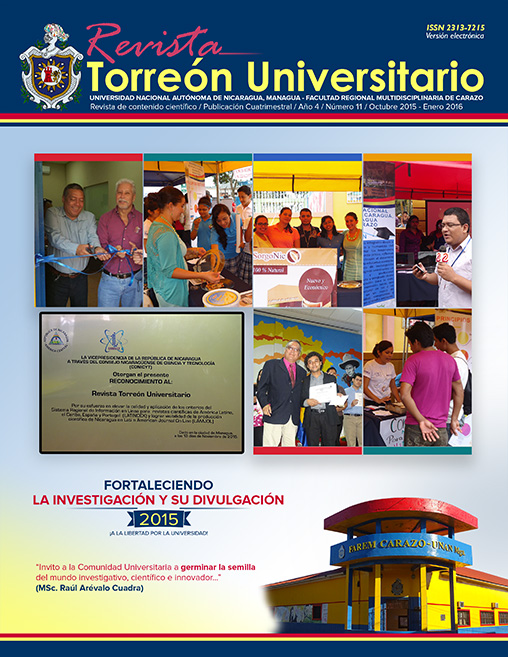Diseño de una heurística para resolver el problema de Corte Bidimensional Rectangular por el Método de Guillotina
Resumen
El presente trabajo se enfoca en el desarrollo de una heurística que resuelva eficientemente el problema de corte bidimensional de placas aplicando el método de la guillotina, ofreciendo un plan de corte que minimice el número de placas a utilizar, de tal forma que satisfaga la demanda por cada tipo de pieza. Dicha heurística ha sido elaborada en dos fases, la primera obtiene una solución inicial, y en la segunda se mejora la solución obtenida en la primera. Esta heurística fue probada por medio de una instancia que permite ver la solución mejorada del algoritmo con tres condiciones: largo, ancho y demanda. La heurística fue trabajada en C++ como parte de un trabajo de fin de módulo del Doctorado en Matemática Aplicada, la cual busca resolver diversas aplicaciones propias de nuestro campo de estudio.Descargas
Referencias
ARMAS, J. (2011) Problemas de corte: métodos exactos y aproximados para formulaciones mono y multi-objetivo. Serie tesis Doctorales. San Cristóbal de la Laguna: SPUDL.
MARTELLO, S. Y TOTH, P. (1990) Knapsack Problems: Algorithms and Computer Implementations. Wiley: New York.
MORABITO, R. Y MORALES, A. (1999) Errata ’A simple and effective recursive procedure for the manufacturer’s pallet loading problem’. Journal of the Operational Research Society, 50:876.
MORENO, F. Y JIMENEZ, J. (2001) Una aproximación al problema del corte en 2 dimensiones con el algoritmo de recocido simulado. Congreso Nacional de Estadística e Investigación Operativa. Úbeda.
PARREÑO, F. Y ÁLVAREZ, O. (2004) Algoritmos heurísticos y exactos para problemas de corte no guillotina en dos dimensiones. Universidad de Valencia. Disponible en: http://goo.gl/Iw4MOr
TEODORO, A. (2003). Un problema de corte Bidimensional utilizando un método de columnas. Tesis de maestría. Instituto de computación, Universidad Estatal de Campinas. São Paulo.
Descargas
Publicado
Número
Sección
Licencia
The authors who publish in this journal agree to the following terms.
- The author or authors of the articles, essays or research grant the National Autonomous University of Nicaragua, Managua (UNAN-Managua) the editing rights (copyright) of the submitted work, therefore the University has the exclusive right to publish the article for the entire copyright period.
- These copyrights/authors authorize Torreón Universitario Magazine and the University to edit and disseminate/publish the article in said Magazine, including printed and electronic reproduction, storage, retrieval and any other type of publication, and sources of secondary information as services. of summaries and databases, they also empower it to protect the article against unauthorized use for dissemination by printed or electronic media (PDF, HTML, EPUB, XML or others).
License for use of content
The magazine uses the Creative Commons Attribution-NonCommercial-NoDerivs 4.0 International License.
Under this statement:

This journal is licensed under a Creative Commons Attribution-NonCommercial-NoDerivatives 4.0 International License. It can be copied, distributed and transmitted publicly as long as the author and source are cited (Revista Torreón Universitario), it should not be modified or used for any commercial purpose. The full license can be found at http://creativecommons.org/licenses/by-nc-nd/4.0/.



